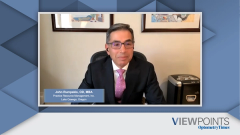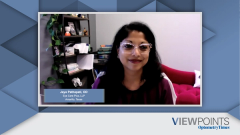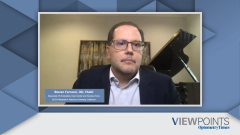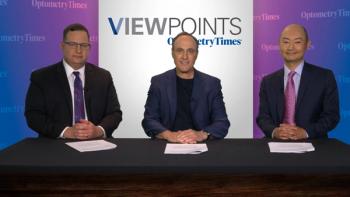
AMD: Benefits of Early Detection
A discussion regarding the clinical benefits of diagnosing age-related macular degeneration early.
Episodes in this series

John Rumpakis, OD, MBA: Hi, everybody. Welcome to this Optometry Times® Viewpoints titled “Remote Monitoring Centers for Dry Age-Related Macular Degeneration.” My name is John Rumpakis. I’m the president and CEO of Practice Resource Management in Lake Oswego, Oregon.
Joining me are 2 esteemed colleagues: Steve Ferrucci, the chief of optometry at the Sepulveda VA [Veterans Affairs Medical Center] in North Hills, California, and a professor at SCCO [Southern California College of Optometry] of Marshall B. Ketchum University; and Jaya Pathapati at Eye Care Plus in Amarillo, Texas.
In today’s discussion we’re going to provide a broad overview and drill down into some specific items on remote monitoring centers and their role in the management of dry AMD [age-related macular degeneration]. We’re also going to discuss the future and see the expanding role that remote monitoring is going to have on retinal disease states. And we’ll review some of the coding and billing aspects for remote monitoring centers and some of the economic aspects of that.
Let’s get started. Steve and Jaya, thank you so much for joining us. Everybody is going to be eager to hear what the 2 of you have to say about remote monitoring and how you’re incorporating that into your day-to-day clinical activities. It’s interesting because both of you come from different backgrounds in clinical settings. Steve, you’re in a VA as an educator; Jaya, you’re in private practice. It’s interesting to see how each of you applies that in those clinical settings. But if we could start with a question. What do you think the broad benefit is on a clinical basis of early diagnosis and intervention with patients with AMD? Who would like to take that first?
Steven Ferrucci, OD, FAAO: I’ll start. The early diagnosis of AMD is important. I’ve felt for years that as optometrists, we spend a lot of time trying to find patients with glaucoma as early as possible because we know that early treatment and early intervention will benefit the patient in the long run. But sometimes we neglect to do the same with macular degeneration. But the sooner we can find these patients with macular degeneration, the sooner we can do things like lifestyle intervention. Talk to our patients about not smoking, eating healthy, perhaps vitamins if indicated. The sooner we can do these things, the more chance we have for this disease not to progress and the patient to lose vision. To me, early diagnosis of AMD is important.
Jaya Pathapati, OD: Yes, I agree. We always try to get their 20/20 vision today, but what about tomorrow? Keeping that 20/20 for as long as they need, that should be the goal—preservation of vision. Early detection is key but so is monitoring that for quality of life issue. I do a little low vision too, so seeing some of the aftereffects of those patients who weren’t detected till late stage is heartbreaking. Wonderfully said, Steve. Keeping that quality of vision, preserving it, and early detection and monitoring are key, and we’re seeing that even more now.
Transcript edited for clarity.
Newsletter
Want more insights like this? Subscribe to Optometry Times and get clinical pearls and practice tips delivered straight to your inbox.









































